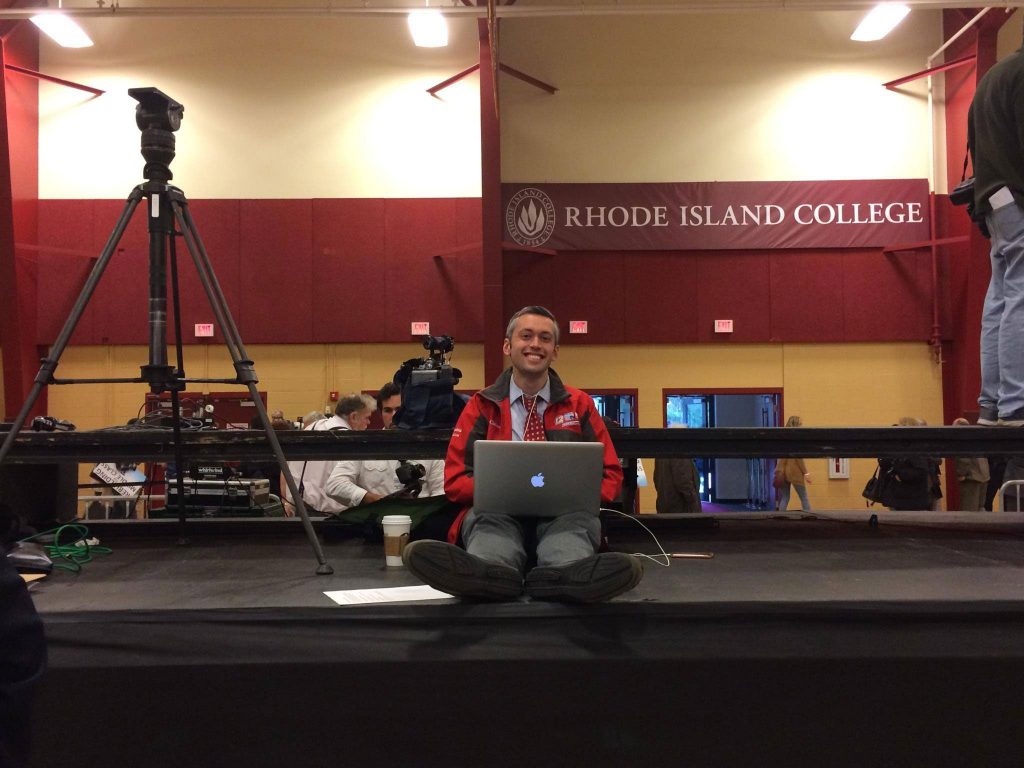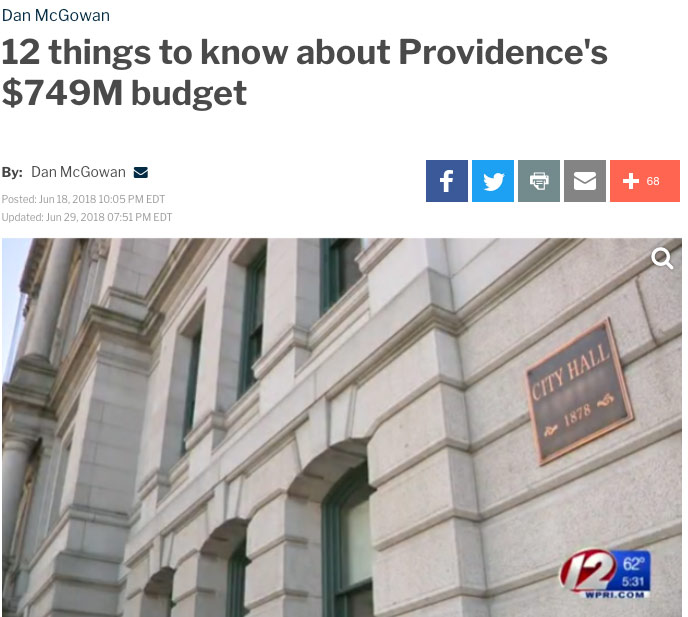They say old-fashioned beat reporting — you know, covering City Hall and stopping by the cop shop every day, showing up at budget meetings, keeping tabs on local schools, that sort of thing — is dead or dying. But someone forgot to tell Ted Nesi and Dan McGowan.
Nesi and McGowan pound those beats and more as digital-first reporters at WPRI, Nexstar’s station in Providence RI. They’re no one’s idea of a stereotypical TV reporter. In a 1940’s movie, they’d be the “newsmen” wearing fedoras with press tickets in the hat band. But in a day when the lines between digital and broadcast are blurring, their work is a critical differentiator for WPRI. “Our brand is depth,” says their boss, News Director Karen Rezendes. “They bring that and more.”
And while the two news hounds have been watchdogs in target-rich Rhode Island way too long to be called “innovative,” they’re now part of a growing trend: local stations using digital journalists to strengthen their enterprise reporting.

Nesi was a print reporter at a Rhode Island business weekly when he emailed then-GM Jay Howell in 2010, pitching himself as a blogger who could write about business and politics. Howell went for it — Nesi thinks his very affordable newspaper salary didn’t hurt — and soon Nesi’s writing caught the eye of the station’s main investigative reporter, Tim White. With White’s support, Nesi started appearing on TV as well, moving from guest panelist and analyst to regular player on White’s Sunday Newsmakers show.

Nesi still covers politics and business, although his online writing style has moved from blogging to more traditional journalism. He believes it’s essential for TV stations to invest in beat reporting now that so many newspapers have had to cut back. “I have ink in my veins, but the numbers are what they are,” he says. “This structure is one way local TV can help fill the gap created by retrenchment of newspapers.”

Dan McGowan’s veins have their own ink quotient. He was working at a local news startup and developing a reputation for breaking stories at City Hall when he got a call from Nesi in 2012: “They’re going to hire another one of me.” McGowan still covers City Hall and other Providence news. He stops by police headquarters every morning to grab a stack of police reports that he can share with the newsroom. McGowan’s Facebook Group, Dan McGowan’s Scoop on Providence Politics, has close to 7000 members who share leads, feedback, and long conversations with public officials and ordinary residents — no swearing allowed.

McGowan’s other passion is education. “We don’t just want to do ‘Are backpacks too heavy?’” he says. For his last back-to-school package, he interviewed every single superintendent in the station’s coverage area. Ditto for a recent story on new statewide standardized test scores: while a TV reporter did an overview for broadcast, McGowan posted comprehensive district-by-district statistics and analysis online, Rezendes told me, enabling users to personalize the coverage by moving from the TV screen to a searchable database on their digital devices. “Our people expect depth, and because the screens complement one another, we can deliver for them,” she says.
Nesi and McGowan work closely with their TV colleagues on stories related to their beats. They see themselves as a new kind of hybrid: part digital reporter, part assignment editor, part TV producer and contributor. “Our relative wonkishness rubs off on the rest of the newsroom,” says McGowan. Rezendes agrees: “The entire newsroom buys in.”
The two reporters and Rezendes see their work as part of a larger station strategy that exploits the respective strengths of the broadcast and digital platforms to achieve a result that’s bigger than either of them on its own. Says Nesi, sounding a lot like a news director himself: “It’s one important puzzle piece in putting together a newsroom and set of news products that drive loyalty and earn the trust of our viewers and readers.”
“These beats that sound like they could be dry and boring actually do have value beyond the articles themselves,” agrees McGowan.
To which Nesi adds: “We went down the rabbit hole, looked around, and came back up with the three carrots.”
Please share your stories of enterprise journalism and collaboration across broadcast and digital platforms by emailing us at cronkitenewslab@asu.edu.